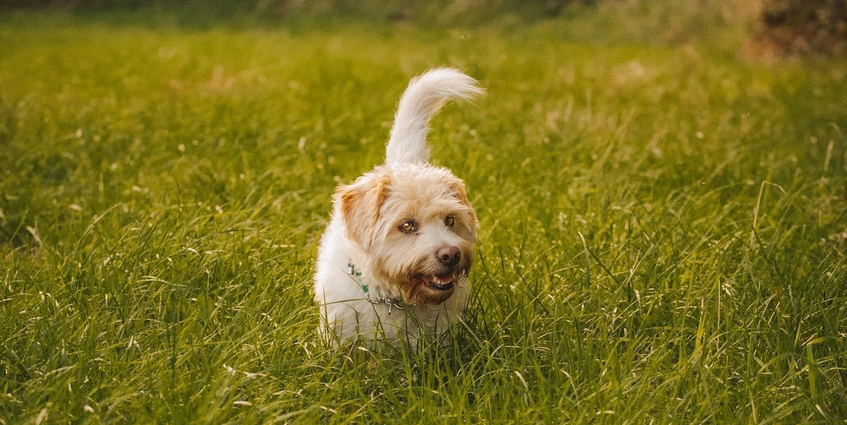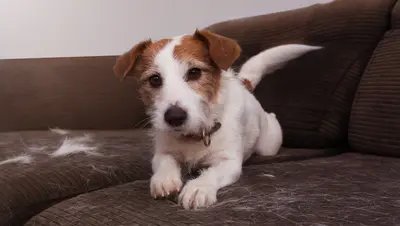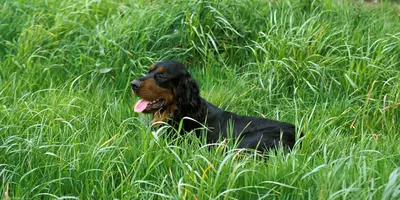Fleas on Dogs | Prevention and Treatment
- 23 Apr 2024
- 7m read

Fleas, those tiny troublemakers, can turn a pup's life into an itchy nightmare. We're here to offer some advice on how to prevent and treat these pesky parasites.
How Do Dogs Get Fleas?
Dogs often pick up fleas during their outdoor adventures, whether it's exploring the park, hiking in wooded areas, or simply playing in the back garden. These outdoor environments provide ample opportunities for fleas to hop onto unsuspecting pups from infested grass, bushes, or wildlife they encounter.
Interactions with other animals can also lead to flea infestations in dogs. Fleas are skilled hitchhikers and can easily jump from one host to another, making it important to be cautious during social outings or encounters with other pets.
Additionally, indoor infestations can occur when fleas find their way into our homes through various means, such as on clothing or belongings, leading to widespread infestations if not properly controlled. By staying vigilant and taking preventative measures, such as regular grooming, using flea prevention products, and keeping indoor environments clean, pet parents can help protect their furry friends from the itchy woes of flea infestations.
What Do Fleas Look Like on Dogs?
Fleas are typically small, dark-coloured insects, ranging from brown to black. They're about the size of a sesame seed, making them hard to spot with the naked eye unless you look closely.
One telltale sign of a flea infestation is the presence of small, dark specks, often referred to as "flea dirt," on your pup's skin or in their fur. These specks are actually flea excrement, which is a polite way of saying flea poop. There is a quick and easy test you can do to identify whether or not flea dirt is present:
Groom your dog over a piece of plain white paper
Apply a small amount of water to the dirt on the paper
If flea dirt is present, it will leak red
In addition to flea dirt, you may also notice small red bumps or welts on your pup's skin, especially around their neck, back, or tail area. These are the result of flea bites, which can cause itching and discomfort for your dog.
What Do Flea Eggs Look Like on Dogs?
Flea eggs are even harder to spot than adult fleas, as they are tiny and translucent, resembling grains of salt. These eggs can be found in your dog's fur or in the environment where they live and feed, such as carpets or bedding.
How to Prevent Dogs From Getting Fleas
Prevention is better than cure. Keeping your dog flea-free is a priority for every responsible pet parent. Getting rid of fleas after an infestation can be an almost-impossible task, due to their ability to hide in soft furnishings, and even on other pets.
Fortunately, there are several measures you can take to help prevent fleas from infesting your pup and your home:
Regular grooming
Regular grooming sessions not only keep your pup looking stylish but also help you spot any signs of fleas early on. Use a fine-toothed flea comb to check for any unwelcome hitchhikers in your dog's fur. You can also use the flea dirt test we mentioned earlier to make identification easier.
Flea prevention products
Talk to your vet about the best flea prevention products for your dog. These may include spot-on treatments, oral medications, or flea collars. Some products even come in the form of tasty treats that resemble a treat, making it much easier to give to your dog.
Flea products prescribed by your vet will always work better than flea products bought from pet stores. Similarly to when us humans are unwell, the medication we get from the chemist is not as strong nor as effective as the products a doctor can prescribe.
Environmental control
Fleas don't just live on your dog; they can also lurk in your home environment. It is estimated that for every 1 flea that you see on your dog, there can be up to 100 fleas lurking in the close environment. Yikes.
Keep your home clean and tidy, vacuum regularly, and wash your dog's bedding frequently to help prevent flea infestations.
Natural repellents
If you prefer a more natural approach, there are some natural remedies that may help to repel fleas.
However, we would always recommend a vet-prescribed flea treatment as a primary measure, natural repellents will not be effective on their own.
For example, you can make a flea-repellent spray by steeping fresh rosemary in boiling water, straining the liquid, and then spraying it onto your dog's bedding.
Can Dog Fleas Live on Humans?
While dog fleas prefer the company of our pooches, they may take a nibble on humans if given the chance. However, they can't infest or reproduce on human skin.
Do Dog Fleas Bite Humans?
Yes, dog fleas can bite humans.
Although their bites are usually more of an annoyance than a serious health concern. Keeping your dog flea-free and using preventative measures can help minimise the risk of flea bites for both you and your furry friend.
Can Dog Fleas Live in My House?
Unfortunately, yes fleas can live in your home.
Fleas are resilient creatures that can infest your home, hiding in carpets, furniture, and bedding. Treating your home as well as your dog is essential to eliminating fleas and preventing reinfestation.
Will Fleas Go Away on Their Own?
Fleas are unlikely to go away on their own without intervention.
Without proper treatment, they can continue to multiply and make life uncomfortable for your dog. It's best to take proactive steps to address a flea infestation promptly by getting effective treatment for your dog and your home from a vet.
How to Get Rid of Fleas on Dogs
Getting rid of fleas on your dog requires a multi-pronged approach to ensure effective elimination and prevent reinfestation. Here's a step-by-step guide to help you tackle those pesky parasites:
Consult your vet
Before starting any treatment, it's important to consult with your vet to confirm that your dog has fleas and discuss the best treatment options for their specific needs.
Use flea treatment products
Your vet may recommend topical treatments, oral medications, or flea collars to help eliminate fleas on your dog. Follow the instructions carefully and apply the treatment as directed.
Bathe your dog
Giving your dog a bath with a flea-killing shampoo can help eliminate adult fleas and soothe their itchy skin. Make sure to use a shampoo specifically designed for dogs and rinse thoroughly.
If you’re using a spot-on flea treatment, be mindful that bathing your dog will wash this away. Therefore, ensure a spot-on treatment is applied after bath time.
Use a flea comb
A fine-toothed flea comb can help remove adult fleas and flea dirt from your dog's fur. Comb through your dog's coat carefully, focusing on areas where fleas are most likely to hide, such as around the neck, back, and tail.
Treat your home
Fleas don't just live on your dog; they can also infest your home environment. Hoover your carpets, furniture, and pet bedding thoroughly to remove any fleas and their eggs. Wash your dog's bedding on a hot temperature cycle to kill any remaining fleas and larvae.
If your dog catches fleas you will need to treat the environment by boil-washing any beds and soft furnishings. You should also use a medicated household spray such as Indorex or RIP fleas to treat the affected areas. We would advise getting these sprays from your vets to make sure they are the latest and most effective treatment.
Consider natural remedies
In addition to conventional flea treatments, you may also consider using natural remedies to repel fleas. For example, you can make a flea-repellent spray by diluting apple cider vinegar with water and spraying it onto your dog's fur (avoiding their eyes and ears).
Prevent reinfestation
Once you've eliminated the fleas on your dog and in your home, it's important to take steps to prevent reinfestation. Continue to use flea prevention products recommended by your vet, keep your home clean and hoovered regularly, and avoid areas where fleas are likely to be present.
Fleas Can Cause Worms in Dogs
It is also incredibly important to ensure that you remain up-to-date with your dog's preventative worming treatments.
The most common species of tapeworm in dogs is transmitted by another very common parasite – the flea. Fleas carrying tapeworm larvae can be swallowed during grooming, which then develop into adult tapeworms in the dog’s intestine.




.png)